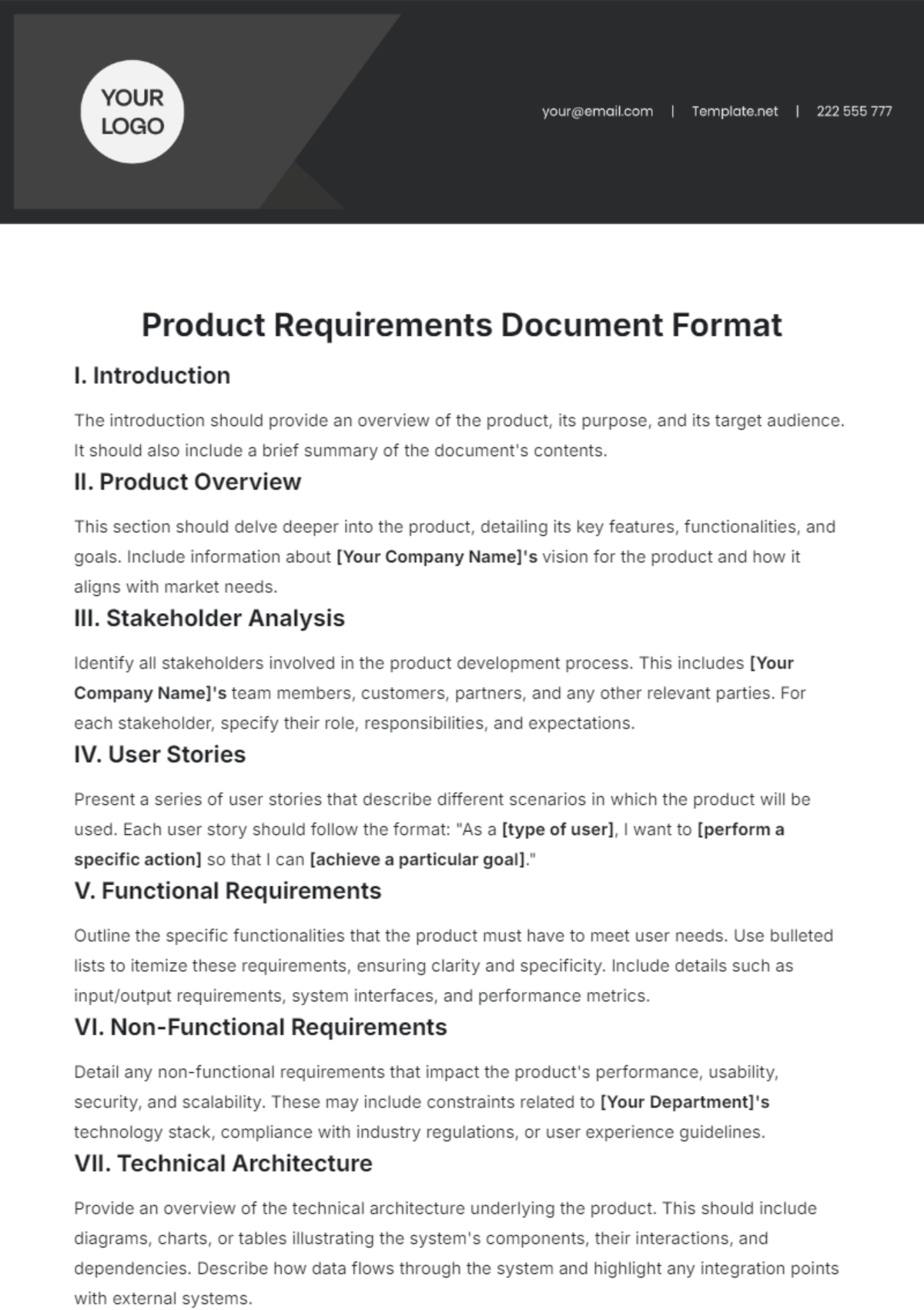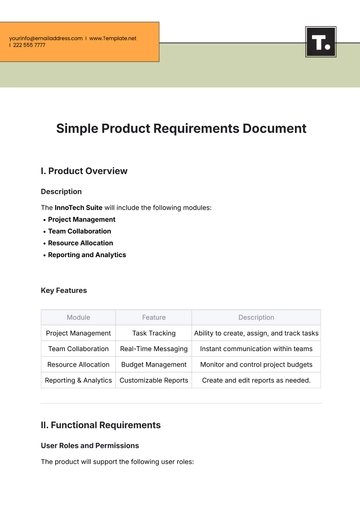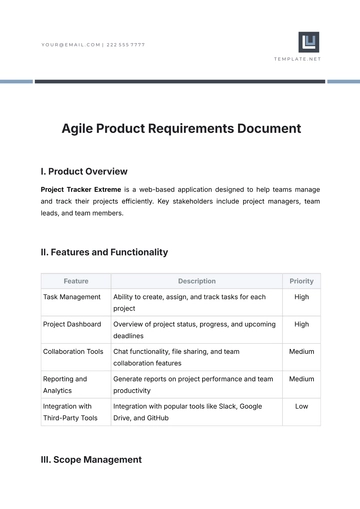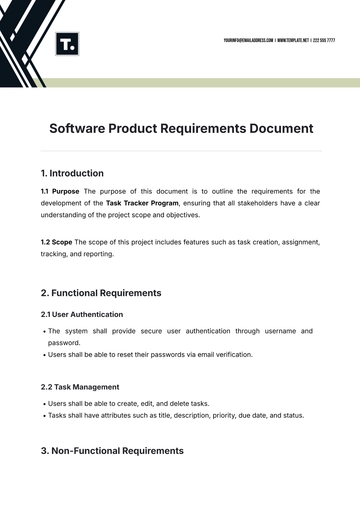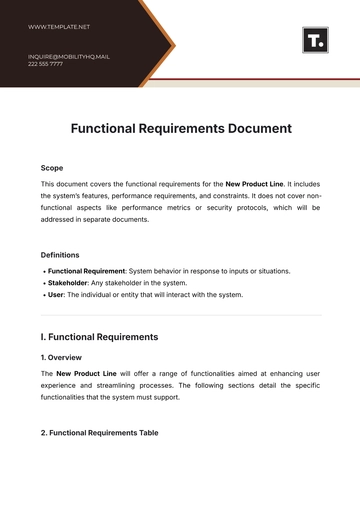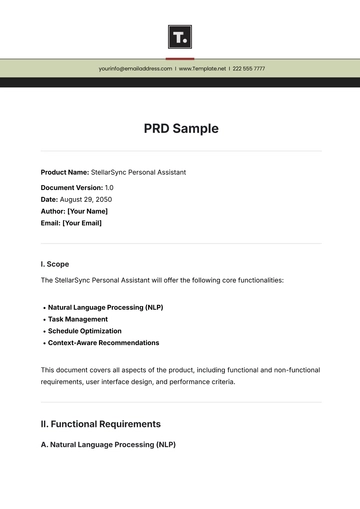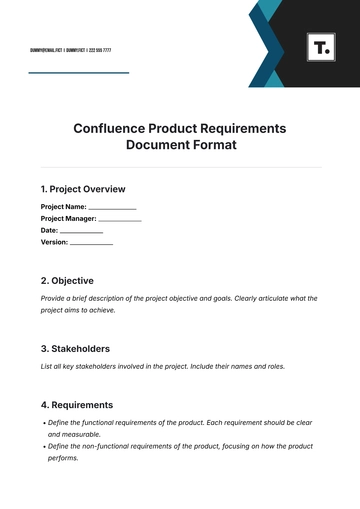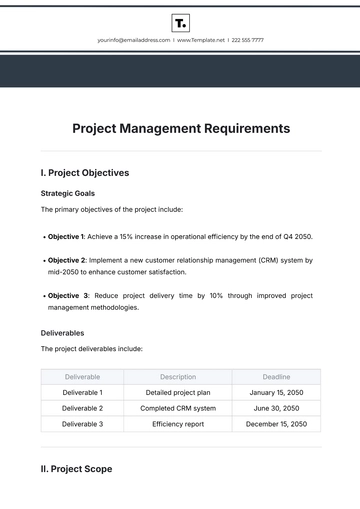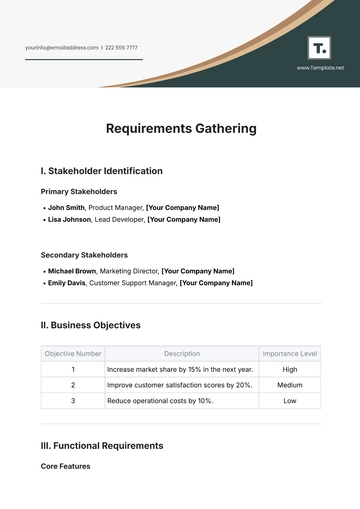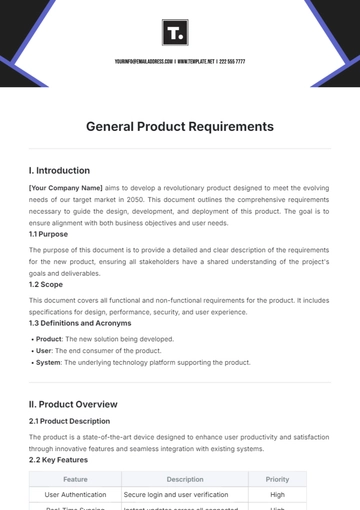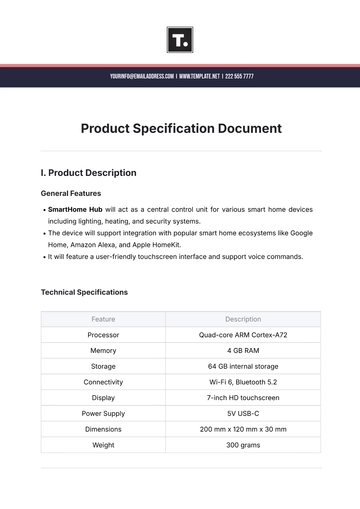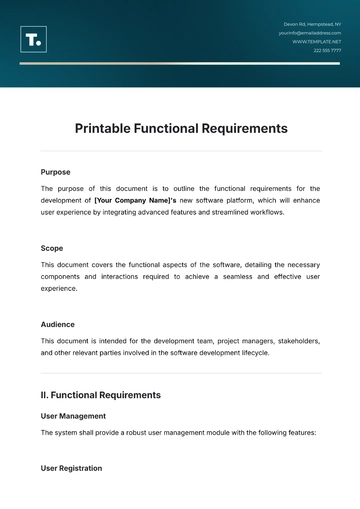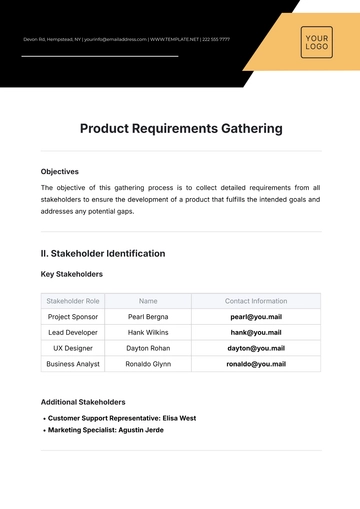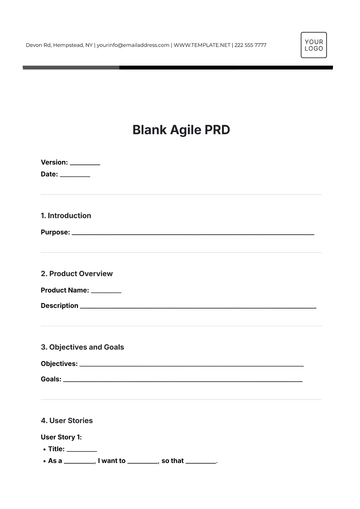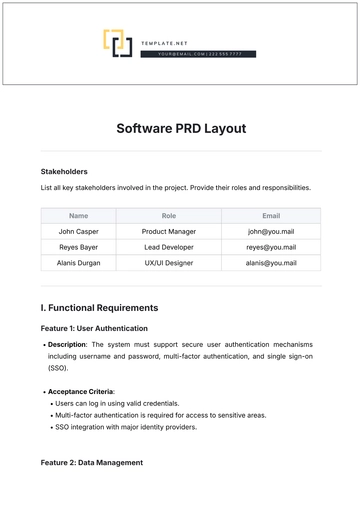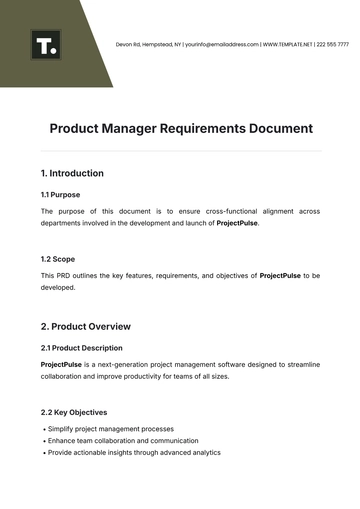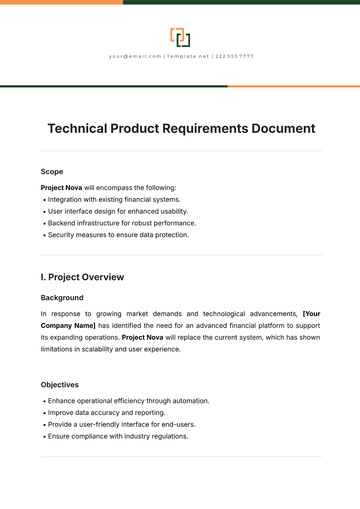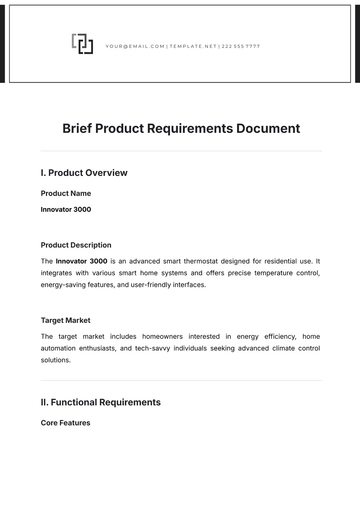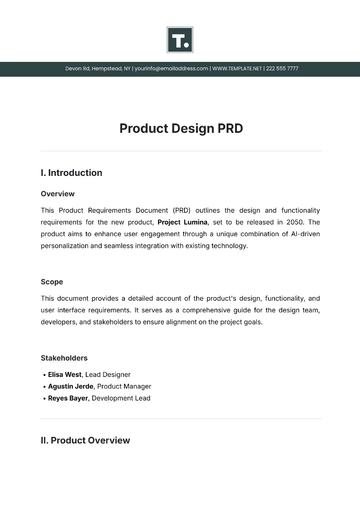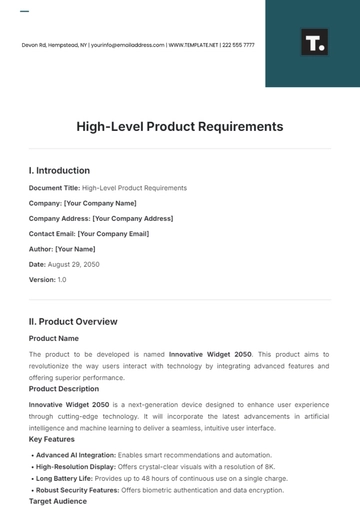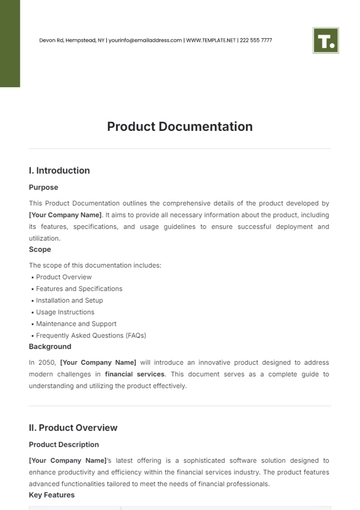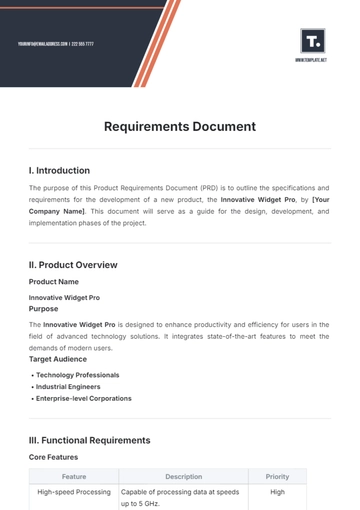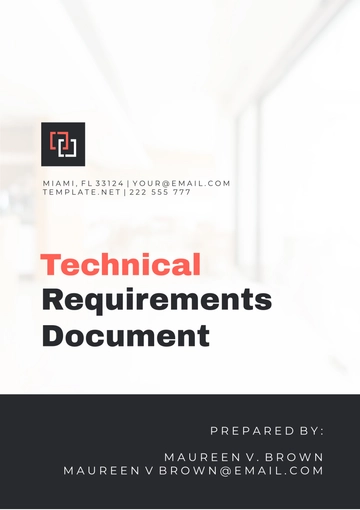Product Requirements Document Format
I. Introduction
The introduction should provide an overview of the product, its purpose, and its target audience. It should also include a brief summary of the document's contents.
II. Product Overview
This section should delve deeper into the product, detailing its key features, functionalities, and goals. Include information about [Your Company Name]'s vision for the product and how it aligns with market needs.
III. Stakeholder Analysis
Identify all stakeholders involved in the product development process. This includes [Your Company Name]'s team members, customers, partners, and any other relevant parties. For each stakeholder, specify their role, responsibilities, and expectations.
IV. User Stories
Present a series of user stories that describe different scenarios in which the product will be used. Each user story should follow the format: "As a [type of user], I want to [perform a specific action] so that I can [achieve a particular goal]."
V. Functional Requirements
Outline the specific functionalities that the product must have to meet user needs. Use bulleted lists to itemize these requirements, ensuring clarity and specificity. Include details such as input/output requirements, system interfaces, and performance metrics.
VI. Non-Functional Requirements
Detail any non-functional requirements that impact the product's performance, usability, security, and scalability. These may include constraints related to [Your Department]'s technology stack, compliance with industry regulations, or user experience guidelines.
VII. Technical Architecture
Provide an overview of the technical architecture underlying the product. This should include diagrams, charts, or tables illustrating the system's components, their interactions, and dependencies. Describe how data flows through the system and highlight any integration points with external systems.
VIII. Wireframes or Mockups
Include wireframes or mockups that visually represent the product's user interface. These can help stakeholders better understand the product's design and layout. Label each wireframe with annotations explaining its functionality and any interactive elements.
IX. Dependencies and Assumptions
Identify any external dependencies or assumptions that could impact the product's development or deployment. This may include third-party APIs, hardware requirements, or regulatory approvals. Clearly communicate any risks associated with these dependencies and outline mitigation strategies.
X. Timeline and Milestones
Present a timeline for the product's development, including key milestones and deliverables. Use a Gantt chart or similar visual tool to illustrate the project schedule, highlighting dependencies between tasks and any critical path items. Include estimates for time, resources, and budget required to complete each phase of the project.
XI. Appendices
Include any additional reference materials or supporting documents relevant to the product requirements. This could include market research reports, competitor analyses, user personas, or technical specifications.
[Your Name]
[Your Position]
[Your Department]
[Your Company Name]
Product Requirements Document Templates @ Template.net
